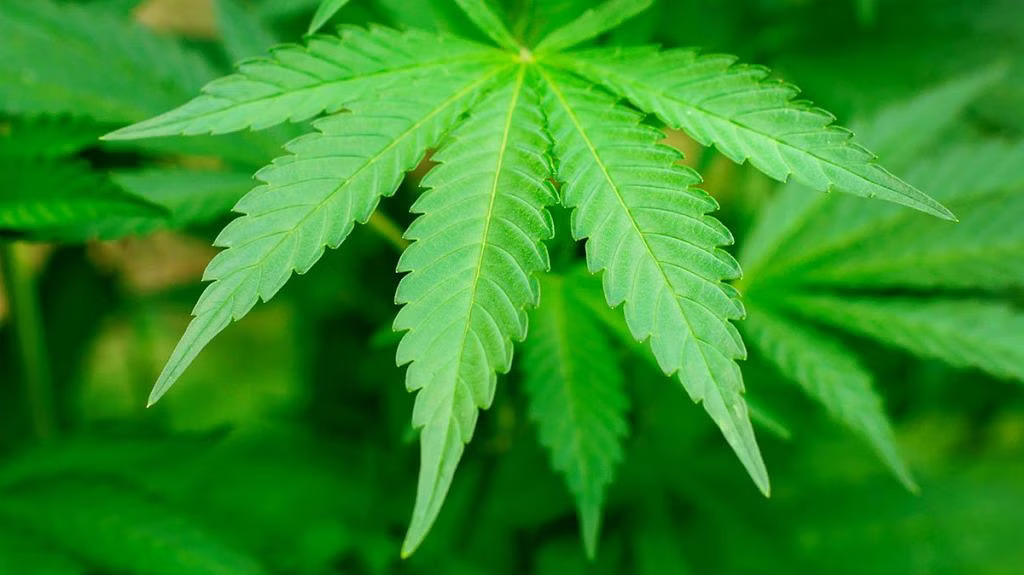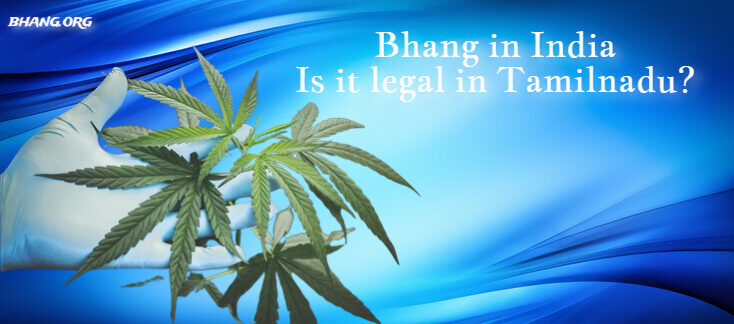
What bhang is called in English? Health Benefits and Side Effects of Bhang
Introduction:
Bhang, an edible preparation derived from cannabis leaves, has its origins in the Indian subcontinent. Its usage dates back to ancient India, as early as 1000 BC, and it remains an integral part of Indian culture. Traditionally distributed during the spring festivals of Maha Shivaratri and Holi, bhang finds its mainstay in specialized establishments known as bhang shops, where it is used to craft cannabis-infused beverages like bhang lassi and bhang thandai.
Preparation:
The preparation of bhang involves grinding cannabis leaves into a paste using a mortar and pestle. This paste can be incorporated into various foods or beverages. For beverages, it is mixed with milk, filtered, and often flavored with ingredients like kusha grass, sugar, fruit, and spices. In regions like Mathura, bhang finds its way into delicacies such as bhang thandai and bhang lassi. Other forms of consumption include mixing bhang with ghee and sugar to create purple halva or forming it into chewy balls known as goli. Additionally, bhang chutney, made from grinding cannabis/bhang seeds with mint, tomatoes, and spices, is a dish found in Kumaoni cuisine from Uttarakhand.
Cultural Significance:
Bhang holds deep cultural significance in the Indian subcontinent, particularly within Hindu traditions. It is believed to possess medicinal properties and is used to treat various ailments in rural India. Consumption of bhang is associated with clearing phlegm, aiding digestion, increasing appetite, and even improving alertness and speech imperfections. During festivals like Holi, the consumption of bhang lassi is widespread, especially in North India, where the festival is celebrated fervently. Mathura and Varanasi are notable centers for bhang consumption, with Varanasi being renowned for the preparation of bhang on its famous ghats.
Forms and Availability:
Apart from beverages like bhang lassi and bhang thandai, bhang is also available in the form of bhang goli, made by mixing freshly ground cannabis with water. Sweetened bhang golis are considered traditional sleeping aids and appetizers rather than drugs. Bhang is also a component of many Ayurvedic medicinal preparations, with bhang powder being legally available at Ayurvedic dispensaries across India.
Legality:
Despite international regulations on cannabis, bhang remains legal in many parts of India due to its cultural significance. The 1961 Single Convention on Narcotic Drugs does not include the leaves of the cannabis plant in its definition of ‘cannabis,’ thus preserving the legality of bhang culture in India. Festivals like Holi and Maha Shivaratri have long seen the consumption of bhang during local festivities, and the cultivation of cannabis is regulated by the government.
What bhang is called in English?
Bhang Definition and Meaning
Noun: A consumable cannabis preparation produced by soaking and grinding the tender leaves and stems of the Cannabis sativa plant. This results in a paste, often combined with milk or water in traditional Indian drinks, recognized for its gentle hallucinogenic properties.
Meaning of Bhang in Hindi
BHANG = भाँग [pr.{bhaNag} ](Noun)
“Bhang” in Hindi can refer to various meanings in English, including dissolution, breach, split, disbandment, destruction, or fracture. It can also refer to an intoxicating drug made from the leaves of Cannabis sativa or hemp. The term “bhang” can alternatively be transliterated as “Bhaṃga.” Additionally, the phrase “khana/cadhana/chanana” can signify being intoxicated or taking “bhang.”
Bhang, known as [भांग] in Hindi, is a plant species identified with Cannabis sativa L. from the Cannabaceae (Marijuana) family. It has several synonyms including Cannabis indica, Cannabis chinensis, and Cannabis generalis. For potential medicinal uses of bhang, you can refer to this page for sources and references. However, it’s important to note that some side effects, whether harmful or beneficial to health, may not be mentioned in the provided information.
Health Benefits of Bhang
According to scientific research, bhang, or marijuana, offers several potential health benefits when used under expert guidance and in moderation for specific medical purposes:
- Bhang is believed to have properties that can help alleviate symptoms of dysentery, fever, digestive issues, loss of appetite, and sunstroke.
- Research suggests that bhang’s psychoactive effects can aid in managing anxiety and stress by rewiring the central nervous system and brain.
- When used responsibly, bhang may be effective in treating depression and addressing chemical imbalances in the brain.
- Bhang has been associated with potential benefits in healing wounds, treating diseases, and managing various neurological disorders.
- Studies conducted in the United States indicate that marijuana can be beneficial for alleviating nausea and vomiting in individuals undergoing chemotherapy for cancer. However, long-term use should be approached cautiously to avoid exacerbating these symptoms.
- Research suggests that bhang could help reduce pain associated with inflammatory conditions like rheumatoid arthritis and fibromyalgia. A notable percentage of individuals prescribed medical cannabis reported a reduction in pain.
- The consumption of marijuana, when used responsibly, may improve sleep quality in individuals affected by conditions such as insomnia, chronic pain, fibromyalgia, multiple sclerosis, and sleep apnea.
- For individuals seeking to gain or maintain weight, moderate consumption of bhang may be beneficial as marijuana can enhance appetite.
- Bhang is also considered a potential remedy for various conditions including dementia, irritable bowel syndrome, Tourette’s syndrome, schizophrenia, and Parkinson’s disease, although further research is needed to fully understand its efficacy for these purposes.
Side effects of bhang
Short-Term Bhang (Marijuana) Effects
The effects of marijuana become apparent almost immediately after smoking as the THC and other compounds enter the bloodstream via the lungs, reaching the brain and the rest of the body. If consumed in the form of edibles or beverages, however, the onset of effects may be delayed by 30 minutes to 1 hour.
While many individuals feel relaxed and euphoric after using marijuana, reactions can vary. Some may experience anxiety, panic, mistrust, or fear, particularly with higher doses or unexpectedly potent strains, or if they are not regular users.
Other effects of marijuana use may include:
- Changes in sensory perception, such as heightened sensitivity to sound.
- Alterations in time perception.
- Mood swings.
- Impaired coordination.
- Decreased cognitive function and memory.
- Elevated heart rate.
- Red eyes.
Those using higher doses may also encounter psychotic symptoms like hallucinations and delusions, especially with prolonged use of highly potent marijuana.
Long-Term Effects and Dangers of Bhang (Marijuana) Use
Apart from the immediate effects of marijuana, there is increasing evidence suggesting long-term consequences on brain development, particularly when use begins during adolescence, a critical period for brain growth. This can lead to various physical and mental health issues, including:
- Respiratory problems: Marijuana smoke can irritate the respiratory system, leading to issues such as coughing, chronic bronchitis, and increased susceptibility to lung infections like pneumonia.
- Pregnancy risks: Children exposed to marijuana in the womb may face challenges with attention, memory, and problem-solving. THC can also pass from a nursing mother to her child through breast milk, affecting fetal brain development.
- Testicular cancer risk: Studies have shown a connection between adolescent marijuana use and a more aggressive form of testicular cancer.
- Cannabinoid hyperemesis syndrome: Chronic marijuana use can lead to severe cyclic nausea and vomiting, although this condition is rare.
- Adolescent brain development: Regular marijuana use during adolescence can impair learning, memory, and impulse control. Heavy cannabis use before age 18 can result in significant differences in brain development. For adults, chronic or heavy use may lead to persistent memory loss and declines in IQ.
- Psychiatric disorders: Marijuana use is linked to an increased risk of mental health disorders such as schizophrenia, depression, and anxiety, particularly in individuals with a genetic predisposition. It can also worsen symptoms in those already diagnosed with schizophrenia.
- Addiction: Marijuana can be addictive, especially if use starts during adolescence.
- Substance use disorders: There is evidence suggesting that marijuana use may increase the risk of addiction to other substances like alcohol or nicotine.
- Unknown consequences of high-potency use: The rise in potency of marijuana products, with THC concentrations increasing from less than 4% to over 15% in recent years, poses potential yet unidentified risks, particularly for the developing brain.
- These long-term effects highlight the importance of considering the potential risks associated with marijuana use, especially among young individuals whose brains are still developing.
Legal Position in India: Is Bhang Legal in India
In India, the legal status of cannabis and its derivatives is governed by the Narcotic Drugs and Psychotropic Substances (NDPS) Act of 1985. This legislation was influenced by international conventions, which India is a signatory to, aiming to restrict non-medical use of narcotics and psychotropic substances.
While the NDPS Act prohibits the production, possession, sale, and consumption of substances like Charas and Ganja, Bhang remains excluded from these prohibitions. This exception is due to the socio-cultural context of cannabis use in India. The Act specifically defines Ganja as the flowering or fruiting tops of the cannabis plant, thus leaving Bhang, made from the leaves, legally permissible.
Additionally, the National Policy on Narcotic Drugs and Psychotropic Substances regulates the cultivation and use of Bhang in India. It strictly defines Bhang as a preparation made solely from cannabis leaves, excluding flowering tops and resins. The policy imposes strict boundaries on the production and cultivation of cannabis for Bhang, allowing only the use of wild cannabis plants and prohibiting commercial cultivation.
Overall, the laws and policies in India aim to monitor and control the use of cannabis and its derivatives. Cultivation permits may be granted for scientific and medicinal purposes, with individual states having the discretion to regulate cannabis-related activities within their jurisdictions.
Bhang Scientific Name
Bhang is an ancient medicinal herb, also known as Marijuana, Indian hemp, or Ganja. Scientifically, it is classified as Cannabis Sativa and belongs to the Cannabaceae family. Bhang is characterized as an annual herb with an erect stem that can grow up to 3 to 10 feet or more. The stem is slightly branched and covered with greyish-green hair.
The leaves of the bhang plant are palmate and stipulate, arranged alternately along the stem. They have long petioles and are smooth, dark green, and serrated. Each leaf typically consists of 3 to 11 lanceolate leaflets, which can grow up to 10 cm long and 1.5 cm wide. The leaflets have acute stipules at their base with tapering ends. Basal leaves, also known as vegetative leaves, are present oppositely.
Bhang produces small, unisexual flowers. Female flowers have a five-veined leaf encircled ovary in a sheath, appearing as single, glandular, and hairy structures. The ovary is one-celled, containing a hanging ovule with thread-like stigmas. The smooth ovaries extend beyond the flower, with the stigma spreading out, often longer than the flower itself. Male flowers have five segments, typically appearing separately and are downy with a pale yellow color.
The fruit of the bhang plant is small and filled with seeds, typically brownish-grey in color.
Classification
- Kingdom: Plantae
- Subkingdom: Tracheobionta
- Superdivision: Spermatophyta
- Division: Magnoliophyta
- Class: Magnoliopsida
- Subclass: Hamamelididae
- Order: Urticales
- Family: Cannabaceae
- Genus: Cannabis
- Species: Sativa
Habitat
Originating from central Asia, Cannabis Sativa is grown across Asia, Europe, Iran, Iraq, Pakistan, and China. Cultivation dates back to 900 BC in India and was later introduced to North Africa during the medieval period. In India, cultivation is regulated and limited to certain areas, while it grows wild in regions such as Rajasthan, Kerala, Tamil Nadu, and Bihar. It’s also cultivated to a lesser extent in Kashmir, Nepal, and Travancore.
Names of Cannabis Sativa
- Sanskrit: Vijaya, Ananda, Bahuvadini, Banga, Bhanga, Bhangi, Bhringi, Bijeeah, Chapala
- Hindi: Bhang, Caras, Charas, Ganja, Bohar
- English: Indian hemp
- Urdu: Bhang, Ganja
- Gujarati: Bhaag
- Telugu: Kalpam-chettu, Ganja chettu, Bangiaku, Ganjachettu
- Bengali: Bhang, Qinnab, Tukhm bhang
- Kannada: Bhangi, Bhangi-gida, Ganja gida, Kusuvu gida
- Assamese: Bhang
- Malayalam: Kancabu, Kancha, Kanchava-cheti, Sivamuli, Cherukanchava
- Manipuri: Ganja
- Tamil: Ganja, Kalpam, Korkkarmuli, Ganja-chedi, Bangi, Bhamgi
- Marathi: Bhang, Bhamgi, Bhangachajhada
- Mizoram: Kanja
- Tibetan: Myan Rtsi Spras
- Farsi: Kinnab
- Persian: Darakte-Bang, Bang, Darakhte-Bang
- Turkish: Hint Heneviri
- Spanish: Bhangane De La India, Cannamo
- Swedish: Tlamp
- French: Cannabis, Canaban, Candi, Caneba
- Dutch: Hennip, Indische Hennepkrid, Kennip
- Chinese: Fuma Ma, Tama, Tang Ma
- Burmese: Ben, Bin, Sechaub
- Arabic: Hinab, Kanab, Kinnab, Naba Tulqunenals
- Tunisia: Korari
- North Africa: Kif
- South Africa: Dogga
- American: Marijuana
Conclusion:
Bhang, derived from cannabis leaves, has been an integral part of Indian culture since ancient times. Despite international regulations on cannabis, Bhang remains legal in India due to its cultural and medicinal significance. It is associated with various health benefits and is consumed in diverse forms, contributing to its rich cultural heritage.
FAQs
What is the scientific name of Bhang?
Bhang is scientifically known as Cannabis Sativa and belongs to the Cannabaceae family.
Is Bhang legal in India?
Yes, Bhang remains legal in many parts of India due to its cultural significance. While the Narcotic Drugs and Psychotropic Substances (NDPS) Act of 1985 prohibits certain cannabis derivatives, Bhang is excluded from these restrictions.
What are the health benefits of Bhang?
Bhang is believed to offer potential health benefits, including alleviating symptoms of dysentery, fever, digestive issues, and anxiety. It may also help in managing depression, reducing pain, improving sleep quality, and enhancing appetite.
What are the forms of Bhang available?
Bhang is commonly consumed as beverages such as Bhang lassi and Bhang thandai. It can also be found in forms like Bhang goli, halva, and chutney. Additionally, Bhang powder is used in Ayurvedic medicinal preparations.
What is the cultural significance of Bhang?
Bhang holds deep cultural significance in the Indian subcontinent, particularly within Hindu traditions. It is associated with festivals like Holi and Maha Shivaratri and is believed to possess medicinal properties used in treating various ailments.


